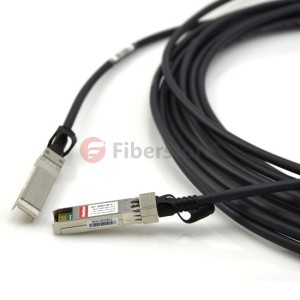Optical transceiver connector as a LAN device, its main task is how to put the two sides well data seamless connection. So you have to consider its compatibility with surrounding environment, and the stability and reliability of the product itself, whereas even if low price we also can’t choose.
Whether Optical Transceiver Supports Full Duplex and Half Duplex?
We know some chips on the market at present can only use full duplex environment, unable to support half duplex, such as connecting to other brand SWITCH and HUB device, and it use half duplex mode at the same time, then it will cause serious conflicts and packet loss.
Whether Did Connection Testing with Other Optical Transceiver?
Optical transceiver currently on the market are more and more, such as the transceiver mutual compatibility of different brand because didn’t do it in advance testing also can produce packet loss, transmission time is too long, sometimes fast sometimes slow and other phenomenon.
If There Is a Safety Device against Packet Loss?
Some manufacturers who produce optical transceiver, in order to reduce costs, to use the register data transfer mode, it take this way, the biggest drawback is unstable when transmission, packet loss, and the best way is the buffer circuit design, it is safe to avoid data packet loss.
Temperature Adaptability?
Using optical transceiver itself will produce heat, the temperature is too high (generally less than 85℃), whether optical transceiver works normally? what the allowed highest working temperature? For a newly to and need to the long running equipment, the point is very worthy of our attention!
Whether Accord with Standard of IEEE802.3 u?
Fiber optic transceivers accord with IEEE802.3 standard, namely the delay time control in 46 bit, such as more than 46 bit, just show the transmission distance of optical transceiver will shorten!
After-sales Service?
In order to make the after-sale service timely response as early as possible, advising clients to choose a strong, advanced technical force, professional company with good reputation.because of Only professional technical engineers’ troubleshoot experience are much richer, the tool which is used to detect the fault system is more advanced!
Transceivers can be selected depending on the technology, for example, Ethernet or FC, and also according to the distance requirements. For shorter distances between FIS, IOMs, and north-bound network switches, twinax cables with integrated SFP is an economical alternative as compared to fiber optic SFP.
The Most Commonly Used Optical Transceivers
Cisco SFP 10G SR: this(SFP-10G-SR) is a multimode optical fiber 10 Gbps Ethernet SFP that can be used for distance up to 400 meters.
Cisco SFP-10G-LR: This is a single-mode optical fiber 10 Gbps Ethernet SFP that can be used for distance up to 10 Km.
Cisco SFP-10G-FEL This is a low consuming multimode fiber optic 10 Gbps Ethernet SFP that can be used for distances up to 100 meters.
Cisco SFP-H10GB-CUXM: These are the twinax cables providing low cost 10 Gbps Ethernet connectivity and are available in 1, 3, 5 and 7 meter fixed length configurations. The actual transceivers are named Cisco SFP-H10GB-CU1M, SFP-H10GB-CU3M, SFP-H10GB-CU5M, and SFP-H10GB-CU7M according to the length each twinax cable provides.
Cisco SFP-H10GB-ACU10M: This is a 10-meter long twinax cable providing 10 Gbps Ethernet. At a length of 10 meters, this SFP cable requires active transceivers at both ends.
DS-SFP-FCXG-XW: These are multi-mode and single-mode fiber optic FC transceivers are named DS-SFP-FC4G-SW and DS-SFP-FC8G-SW according to the speed and distance covered by the transceiver.
In fact, there is a better way to help you solve this problem, Fiberstore is a very good choice. Fiberstore designs, manufactures, and sells a broad portfolio of optical communication products, including PON, subsystems, optical transceivers used in the enterprise, access, and metropolitan segments of the market, as well as other optical components, SFP module, and subsystems.





